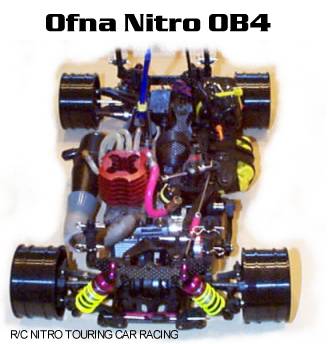
![]()
|
|
Chassis Tuning 101 by Eric Perez |
No. | Name | Cost |
1 | Camber Gage | $8.00 |
2 | Toe-in Gage | $8.00 |
3 | Ride height gage | $13.00 |
4 | Setup wheels | $12.00 |
5 | Small ruler | $3.00 |
6 | Vernier Calipers | $12.00 |
These obviously need to be complemented by your regular maintnance/assembly tools such as screw drivers, pliers, Hex-Drivers and assorted wrenches.

Step one, with the tires of your choice push down the suspension and let it settle. Record your ride height or set it to your regular value. Typically we want the back to be lower than the front for increased rear traction or the front to be lower than the back for increased steering response. Use the ride height gage and shock spacers to fine tune the ride height. The suspension should be at ease, this means that the shock springs can't be compressed when the wheels are off the ground. If the shocks don't have a neutral point the car is going to feel twitchy in the corners. Once the ride height has been set, raise the chassis up. There should be 2-3mm of shock shaft movement. This is called suspension droop. On off-road cars/trucks you want alot of chassis drop in the rear to help absorb the impact of the big jumps. On on-road cars you want to stay in the 0-3mm range. If the droop is over 3 mm the car is going to shift a lot of weight around when you hit the brakes and accelerate in the corners. All this chassis swaying is going to make the car feel inconsistent and hard to control in the turns. You want the car to run as flat as possible through the corners. If you need more traction in the corners then lighten the shock oil/springs, reduce the sway bar stiffness or simply remove them.
Now that you have the chassis ride height with your choice of tire, it's time to bolt on a pair of setup wheels. Take note of the outer rim face. This is important because some wheels have a different profile in the front bead area, this could make the camber gauge read different values with a certain style of rim and a different reading with another wheel design. Aluminum setup wheels are expensive and usually not flexible enough to be used with pivot ball suspension cars because they lack a hole to put your hex-wrench to adjust the camber. I found a real good alternative to using crappy aluminum setup wheels.

Super touring 2.2 " wheels work really well for chassis adjustment. They are tall enough to keep the chassis off the ground and do height adjustment checks. They are wide so it's easy to measure toe-in/out measurements and they also provide holes so you can adjust the suspension on cars with pivot-ball hubs. did I mention they are a lot cheaper than the aluminum one's.

Now come the shocks. 80-60 wt Shock oil w/ 2 hole pistons up front with modified HPI progressive GEEEN/BLACK/RED springs. On the rear use 30-40 wt shock oil w/ 2 hole pistons with modified HPI progressive RED/YELLOW/WHITE progressive shock springs. Use the shock mounting positions to fine tune damping. Laying down the shocks makes damping progressively stiffer. Having the shocks upright makes damping more linear. Having said that I mount the front shock in position (2) on the front arm. The rear shock is placed in position (2) on the shock tower and position (1) on the rear arm.
This is an important one. Ride height will determine how much moment your car will have when it's navigating the turns. Your car has two(2) roll-centers. If the roll centers are very low then the force that they excert on the suspension is going to be smaller. The higher the ride-height the higher the roll centers and the more the chassis will tend to sway in the corners. This chassis sway or roll is not a bad thing. When the chassis rolls it produces high levels of tractions on the outside tires. Chassis roll is a two edged sword, because when you finish your turn the chassis has to release the energy by rolling in the direction opposite of the turn. This counter roll can get the car off balance and cause the car to spin out (very common). Excessive roll can also cause the traction to increase so much that the car can roll over (not a good thing). Ride height also affects the car when it's not in the corners. This is because by lowering one end off the car you are in effect shifting the weight to the part that is lower. If the rear end is lower you will have more rear traction the opposite is true if the front is lower. The limits in the adjustability of the ride height is scrapping the ground (to low) or your rolling over (too high)
Note: that large changes in ride height might change other variables in the suspension. This is mainly due to the geometry of the suspension arms. also swapping tires that have different diamaters(LP2 for a standard or LP tire) will change your ride height and your gear roll out.
Caster is easily used to alter front traction as the front wheels are turned. With high levels of caster you will loose steering when going into a turn and gain it at the apex of the turn. The opposite is true with reduced caster. Once thing to have in mind is that if the car is cornering flat by effective use of chassis droop tuning, then you can use less caster, because the front is not rolling as much in the turns. The good thing about caster is that it's easy to change. I usually start with very little caster when trying out a new setup. As the tires warm up and I start getting used to the track I use more caster to increase front traction in the corners. As more caster is used you can reduce the front camber.
Next we adjust camber on all four wheels. I usually go for -1 to -2 up front and -2 for the rear. Also on the N-4-T I moved the camber linkage to the next lower hole (3). This gives more aggressive camber changes while executing tight turns. Basically you'll be able to run less camber on the rear, yet still hold a better line with the increase in cornering camber. The rear hub retained the stock camber and pivot locations.

Now we deal with toe-in and toe-out. We once again bolt on the pair of set up wheels and go to town. If you have a toe-in gage, great. You can also use a tape measure. Measure the widest part of the car in front of the rim and in the back. Every 1/16" on the tape measure or toe-in gage is equivalent to 1 deg Note: This is not "true" 1 deg, but for tuning purposes it will work. All you need is a reference point you can go back to. A cool trick for measuring rear toe-in is to set the car vertically against the rear tires and use the camber gage with the car pointing straight up. With the n-4-T you only have to worry about adjusting the front toe-in/out because the rear is set by the rear hub carrier. I use the -1.5 deg hub carriers on the 4-TEC. On the front decreasing toe-in will make the car react slower to steering inputs, once your in the turn the car will have increased steering. If you use toe-out in the front the car will react quicker at the beginning of the turn but steering will decrease while in the turn. You can use this to dial-in a little push or dial it out if you have the rear traction available. Having said this I usually run 1 to 1.5 toe-in up front to tone down the initial steering response on the N-4-T.

Some people bolt on a set of sway bars without really knowing what effect this is going to have on the car. If it's on-road it has to have a sway bar... Well if you choose a good spring/oil combination you really don't need sway bars. Some touring cars have a lot of steering designed into them. This can be affected by tires/suspension settings, shock oil weight and driving style. If you want to tone down some of you're N-4-T's steering and believe me it has plenty of it, then bolting a pair of sway bars up front is a good way of taking some front traction away. If the car is too tail happy then by all means remove the rear sway bar. You can either use the electric 4-tec anti-roll kit which is softer or the black "stiff" kit from the nitro-pro version. Another way you can adjust the stiffness is by moving the pivot block closer to the sway bar or by swapping the sliver wire (electric) to the black one's (nitro). To wrap it up if you need more damping a sway bar can help. If you need to transfer some traction from the front to the back or visa-versa then a sway bar can help. But in both cases so will a spring change. If you don't have down stops and you're chassis is swaying badly in the corners then the sway bar will also help. Just keep in mind that you will loose traction on the side that the sway bar is installed. Note: If the car is overeacting in the corners because of a soft suspension the anti-roll bar will help you slow the weight transfer in the corners and will make the car feel more consistent.
Hope this article got your gears spinning. There are many different ways to setup a car this is only one approach. Remember don't go crazy changing half a dozen things at once. You will never now which change made the difference. Good luck with your racing.
Whoop some RC car butt
Eric Perez
Team NitroRC.com